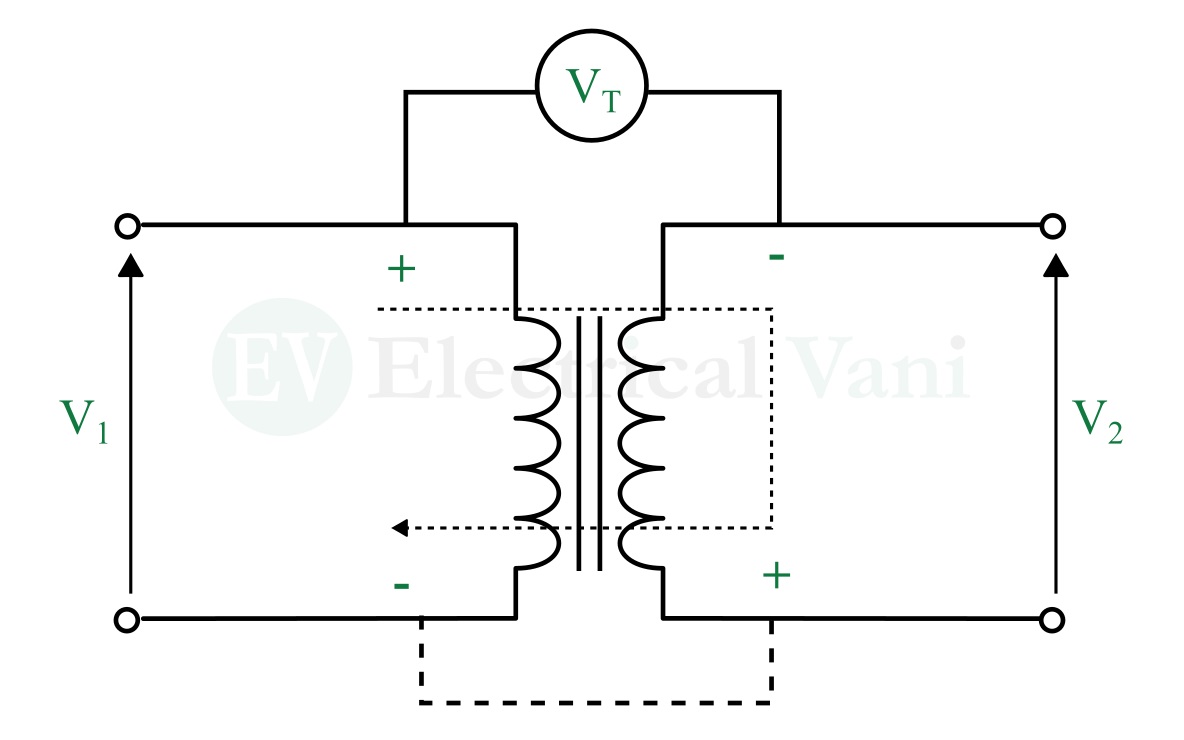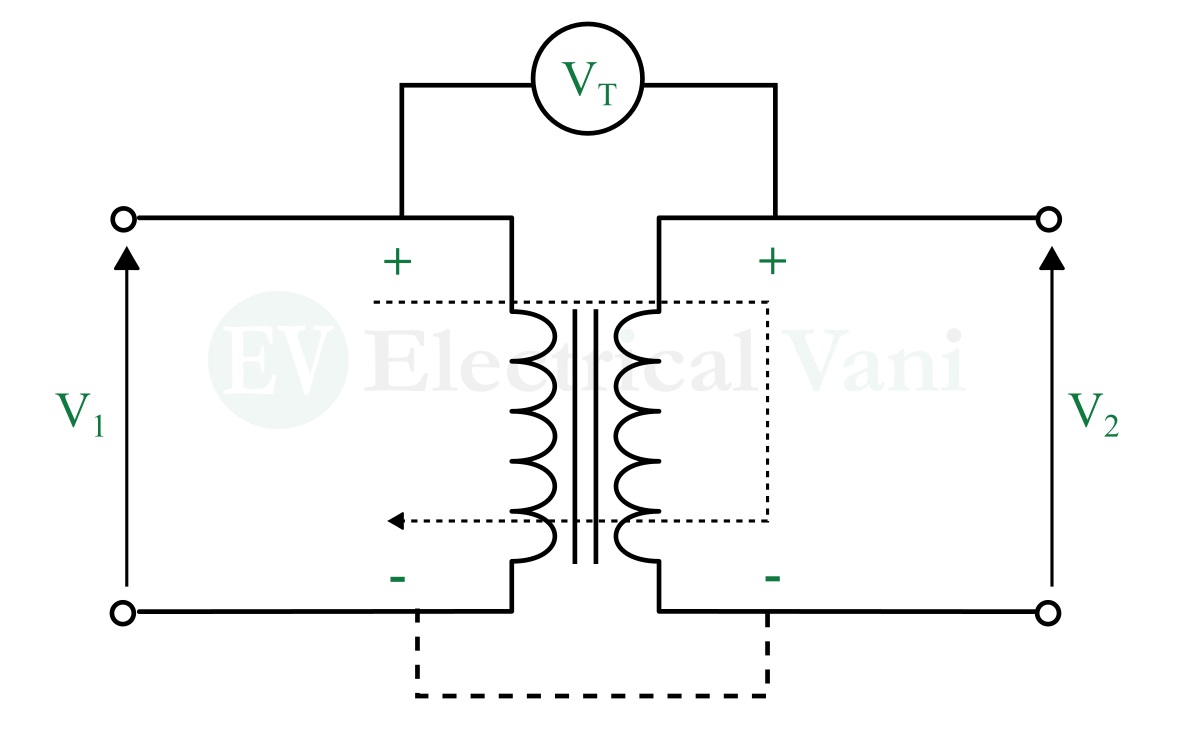In this article, we will learn about the Polarity of Transformer. In an electrical transformer, the concept of polarity plays a significant role in understanding how a transformer works.

What is Polarity of Transformer?
In an electrical transformer, the term polarity represents the direction of the flow of current through its windings at a given point in time.
Let’s understand the meaning of polarity with the help of the water pipe analogy. Consider a pipe as a winding and electric current as the water. If water enters the pipe at one end and leaves the pipe from another end, then the direction of water flow at each end represents the polarity of that end.
Why is Transformer Polarity Important?
The knowledge of transformer polarity is very important for connecting two or more transformers in parallel. A correct transformer polarity ensures the reliable and efficient operation of transformers in parallel.
The effects of correct and incorrect polarities of transformers are explained here:
- Correct Polarity – If transformers are connected in parallel with correct polarity, then the voltages of all the paralleled transformers support each other and allow them to work efficiently.
- Incorrect Polarity – When transformers are not connected in parallel with a correct polarity or have an incorrect polarity. Then, the voltages of all paralleled transformers oppose each other and can cause short circuits and damage to the transformers.
Polarity in Transformer Based on Windings
The transformer polarity is generally determined from the arrangement of primary and secondary windings on the core. Based on transformer windings, we can determine the transformer polarity as follows:
- Same Winding Direction – When the primary and secondary windings of the transformer are wound in the same direction around the magnetic core. Then, the induced EMFs will be in the same direction in both windings. Therefore, the corresponding ends of both primary and secondary windings will have the same polarity. This type of transformer polarity is referred to as reduced polarity or same-level polarity.
- Opposite Winding Direction – When the primary and secondary windings of the transformer are wound in opposite directions around the core relative to each other. Then, the induced EMFs in both windings will be in opposite directions. Hence, the corresponding ends of the primary and secondary windings will have opposite polarities. This type of transformer polarity is referred to as hetero-polarity or polarity addition.
Polarity of Transformer Based on Winding Voltages
Depending on the winding voltages, the transformer polarity can be broadly classified into the following two types:
- Additive Polarity
- Subtractive Polarity
Let’s discuss each type of transformer polarity in detail.
Additive Polarity
When the voltages of the primary and secondary windings of a transformer add up together, then it is known as the additive polarity of the transformer.

If V1 is the primary winding voltage and V2 is the secondary winding voltage, then according to additive polarity,
$$V_T=V_1+V_2$$
Where, VT is the resulting voltage between two windings.
Therefore, in the case of additive polarity of the transformer, the primary winding and secondary winding voltages combine together to produce a higher total voltage.
Additive polarity is generally used in small-scale distribution transformers to supply power to homes and businesses.
Subtractive Polarity
When the voltage of the primary and secondary windings of a transformer are subtracted from each other, then it is known as the subtractive polarity of the transformer.

In the case of subtractive polarity, the total voltage measured between primary and secondary windings will be the difference of voltages between these two windings i.e.,
$$V_T=V_1-V_2$$
Where, VT is the total voltage between primary and secondary windings, V1 is the primary winding voltage, and V2 is the secondary winding voltage.
For subtractive polarity, if V1 – V2 > 0, which means V1 > V2, then it is called a step-down transformer, while if V1 – V2 < 0 or V1 < V2, then it is called a step-up transformer.
The subtractive polarity of the transformer is used in large-scale transformers.
Conclusion
So, this is all about the polarity of the transformer. If you have any questions related to this topic, kindly post them in the comment section, and I will answer them shortly.